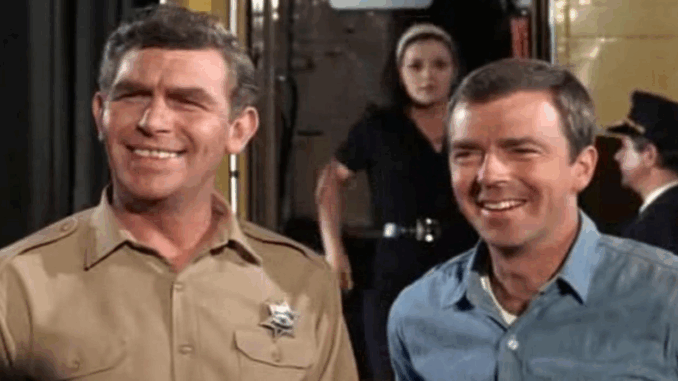
In the television era of the 1950s and 1960s, fake laughter (laugh track) was almost an indispensable feature in comedy shows. It was a tool to direct the audience’s emotions, reminding them: “This is the funny part, laugh.” Most of the popular sitcoms of that time such as I Love Lucy, Bewitched, Gilligan’s Island or The Beverly Hillbillies used this form as a production standard. However, in the midst of that wave of laughter, The Andy Griffith Show chose to go the opposite way – not using laugh tracks, even in the funniest scenes. This was not a technical shortcoming, but a wise decision and a deep artistic intention. Because Andy Griffith – the main character and also the creative soul of the show – understood that: The Andy Griffith Show is not a simple comedy show. It is a gentle, humane and symbolic slice of a simple, honest and compassionate America. The lack of fake laughter allows the audience to feel the humor through their own personal experiences and emotions, rather than being led by the sound of laughter that is repeated over and over again in an industrial way.
Mayberry – the fictional town in the film – is a small, peaceful world, almost unaffected by the social chaos outside. There, Sheriff Andy Taylor solves problems with tolerance, empathy and keen observation instead of violence or intimidation. The character Barney Fife – the clumsy but kind deputy police officer, played by Don Knotts – always brings laughter naturally thanks to his charming acting and genuine clumsiness. The boy Opie, the son raised with love and gentle discipline, brings to the audience not only a lovely innocence, but also profound lessons about fatherhood and maturity. Along with that are the supporting characters like Aunt Bee, Gomer Pyle, or Floyd the Barber – each with their own personality, their own awkwardness, but each portrayed with affection and respect. If laughter were installed in those situations, perhaps the emotions would be diluted; the precious moments of silence – where viewers quietly laugh or sigh – would be distorted by a kind of artificial and mechanical sound.
Without fake laughter, The Andy Griffith Show allows viewers to step into Mayberry as if entering a real place – a place where they can breathe, can be quiet, can let emotions happen naturally. This makes the show different not only then but also for a long time after. Today, when modern audiences are gradually tired of industrial sitcoms with pre-made “setup – punchline – laugh”, they look for programs that are sincere, rustic and truly connect. The Andy Griffith Show fulfills that – as a true “comfort show”, not flashy, not overly dramatic, but full of kindness and intelligence. The absence of fake laughter does not diminish the humor, but even enhances the emotional depth, because it forces the audience to really listen, feel and react in their own way.
Not only that, this choice also helps the show avoid obsolescence. Many contemporary sitcoms are now considered “cheesy”, “out of step”, partly because the laugh track sounds too fake to the ears of 21st century viewers – who are used to more sophisticated storytelling. In contrast, The Andy Griffith Show is still rerun regularly, has loyal fans across generations, and is even considered a “soul-purifying” therapy in a world full of chaos and overwhelming information. This further demonstrates the enduring vitality of a show that does not rely on tricks, but on human nature. Laughter is not mechanical, but comes from love and understanding – something that the audience never feels forced upon them.
In art, silence is sometimes more valuable than sound. And in television, sometimes what is not there is what makes the difference. The Andy Griffith Show understands this. Without fake laughter to guide the emotions, the show invites viewers to sit down and share a gentle slice of life – where values like honesty, fatherhood, fairness and kindness are still at the core. In this way, the show is not only a memory of America’s past, but also a quiet but powerful reminder of how we should live today.

